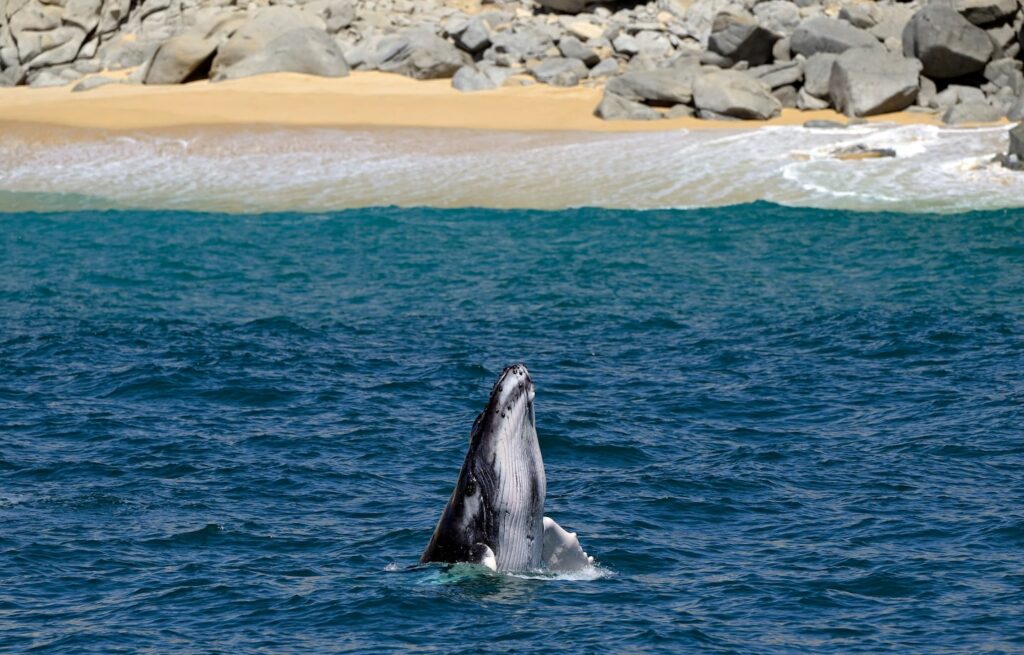We are now in the second year of unprecedented continuous ocean heating. Scientists say this may represent major changes to Earth systems that are irreversible on human timescales.
Gavin Schmidt, director of NASA's Goddard Institute for Space Studies, told the Washington Post that what has been observed so far in the ocean “doesn't add up.”
“This could suggest that global warming is already fundamentally changing the way the climate system works, much sooner than scientists expected,” he said in a column in Nature. .
Sea water temperature suddenly rises to “off the charts''
Warming is spreading far beyond the Pacific region affected by El Niño.
For example, surface temperatures in many parts of the Atlantic Basin remain 1 to 2 degrees Celsius (1.8 to 3.6 degrees Fahrenheit) above the 1971-2000 baseline. Satellite data from the National Oceanic and Atmospheric Administration shows extreme temperatures of more than 3 degrees Celsius (5.4 degrees Fahrenheit) in some areas off the coasts of South Africa, Japan and the Netherlands.
The ocean heatwave also coincides with the warmest conditions ever observed in the atmosphere. Last year, Earth's average temperature rose more than humanity has ever known, with Earth reaching perhaps its hottest period in more than 100,000 years. Climate scientists predict that 2024 could be even warmer.
But Celeste Sauro, director-general of the World Meteorological Organization, said such dramatic warming across the Earth's oceans is unlikely, given that heating water requires much more energy than heating air. He said it was even more worrying that there was a decline in the population.
“The time scale in the ocean is not as fast as in the atmosphere,” Saul said at a press conference. “Once the change is established, I think it's almost irreversible on time scales that extend from 100 years to 1000 years.”
In its annual climate report published Tuesday, the group said a number of climate indicators last year “gave eerie new meaning to the word 'off the charts',” including It said these included melting glaciers, less sea ice in Antarctica, and rising sea levels caused by oceans. The heatwave covered more than 90 percent of the ocean's surface at some point in 2023.
The most unusually warm weather hit large areas of the eastern North Atlantic, the Gulf of Mexico and Caribbean, the North Pacific, and the Southern Ocean, WMO said. Since April, global average sea surface temperatures have broken records every month, with July, August and September records being “particularly dramatic,” the group said.
serious but unpredictable consequences
Warming of the world's oceans is already having a devastating impact on coral reefs. This month, deadly heat has gripped largely pristine areas of Australia's Great Barrier Reef, repeating last year's coral bleaching and death around Florida.
Detecting other effects takes more time.
There are concerns that warming and melting could push the vital Atlantic current system toward collapse, but the tipping point for when that will occur is unclear. It will have a huge impact on underwater ecosystems and weather patterns.
And there could be cascading effects on marine life.
In the Gulf of Maine, where water temperatures are rising much faster than the entire world's oceans, researchers are finding important species such as cod and herring struggling to find cold water within their normal geographic range. has already been witnessed. Katherine Mills, a senior research scientist at the Gulf of Maine Research Institute, said many fish grow rapidly when young, but then plateau at a small size, either because they're not getting enough food or because they're too hot. He points out that this is a sign of stress on the body. .
The temperatures observed over the past year have been extremely extreme compared to historical conditions, making it increasingly difficult to predict with certainty what the impact will be, Mills said. Stated. Existing data on ecosystem change is becoming outdated too quickly, she said.
“It is generally expected that there will be variations in temperature in the ocean,” Mills said. “This takes that variability to a range we've never encountered before.”
“I think this is really a wake-up call,” she added.
Scientists don't know if or when extreme ocean warming will subside. So far, none of their theories about what causes it answers all the questions.
Part of the warming may be related to reduced air pollution from liners, which allows more sunlight to reach the ocean surface. Then, in 2022, when the underwater volcano Hunga Tonga Hunga Ha'apai near the island nation of Tonga erupted, large amounts of water vapor, a greenhouse gas that causes global warming, was released into the atmosphere. However, neither factor explains the rapid increase in ocean heat.
Sea temperatures soared last spring during the final stages of La Niña, a global climate pattern that lasted three years in a row. La Niña is the opposite of El Niño and is known to reduce global warming. Boing Huang, a NOAA oceanographer who specializes in analyzing ocean temperatures, said much of the rise in ocean temperatures was due to the switch from La Niña to the historically strong El Niño, known for raising global temperatures. He said that this may explain the cause of this.
As a result, ocean temperatures may drop in the second half of this year, leading to another La Niña event.
However, it remains to be seen whether the switch from El Niño to La Niña will be enough to significantly halt global warming and the effects of greenhouse gases. Huang said more could be revealed by the end of summer if ocean temperatures continue to set records.
If record warmth continues under La Niña, “the world will enter uncharted territory,” Schmidt wrote, with much more uncertainty about the future climate than scientists previously knew. It is said to be expensive.


